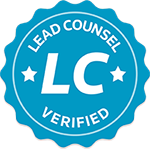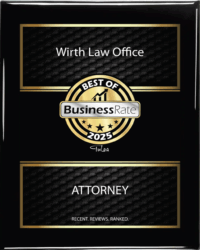I, as Your Bankruptcy Attorney Come up With You for a Plan That Pays at Least the Disposable Income
Video Transcribed:
What is a Oklahoma Chapter 13 bankruptcy? Edward Kelley here, Oklahoma bankruptcy attorney for Wirth Law. We make law easy. I’m going to tell you right now what is a Chapter 13. On an earlier video, we talked about what a Oklahoma Chapter 7 is. That’s your liquidation, what you want to do, if you can, cut and run. Chapter 13 is what comes into play when one of two situations comes up.
First, you make too much money. I talked about in the earlier video there’s a cutoff to do the Chapter Seven liquidation. It’s in the 40s, 40,000 a year range, upper 40s, for one person in Oklahoma currently. Add about 10,000 for each person in your household after that. You make much more than that, and you don’t have some extraordinary expense that would pull you back down, that means you have disposable income. That means you’re going to have to do a 13.
The other scenario is if you have debt that you’re going to have to take care of one way or the other and you need to spread it out over three to five years. Depending on your income, if you make too much, you’re going to have to do a five year, 60 month plan. If you could do a seven, but for other reasons, you’re doing a 13, you can do as little as three years, 36 months. That second scenario would be, for example, if you’re way behind on your house or your car.

You have no way to catch it up. You might be in foreclosure, about to be repossessed. That 13, you can actually force the creditor to stop what they’re doing and allow you to catch up. It’s a lot more involved than a seven.
Basically like an 11, where you reorganize a business, which I talked about in another, video in a 13, you’re reorganizing as a person. Chapter 13 is for an individual, not for a business, but like the business bankruptcy, you’re going to come up with a personal reorganization plan.
What you have to pay in is based only on what you owe. I got that backwards. It’s based only on what you can pay, not on what you owe, unless you have a debt that has to be paid in full, for example, taxes that are less than three years old, child support, criminal penalties, or, again, arrearage on a house you’re about to lose or a car that’s about to be repossessed.
Those you might need to pay in full. I, as your Bankruptcy attorney come up with you for a plan that pays at least the disposable income, meaning what you have left over, you can’t pay less than that, for either the five years or as long as it takes to pay off the debt that you have to pay in the bankruptcy.
For example, if the cutoff for a seven was 40,000 for one person, and you make 50,000, then you’ve got 10,000 leftover. Take 10,000 divided by 60, whatever that is. Well, let’s say you make 10,000 over, so then you’re looking at $100 a month payment. You can do the math on that.
Whatever disposable income that you have leftover, divide that up and spread that out per month for the 60 months. Of course, you don’t pay more than what you owe. But that in a nutshell is a Chapter 13. As always, feel free to contact me and get in touch at Make Law Easy, which is our Wirth Law website.






















